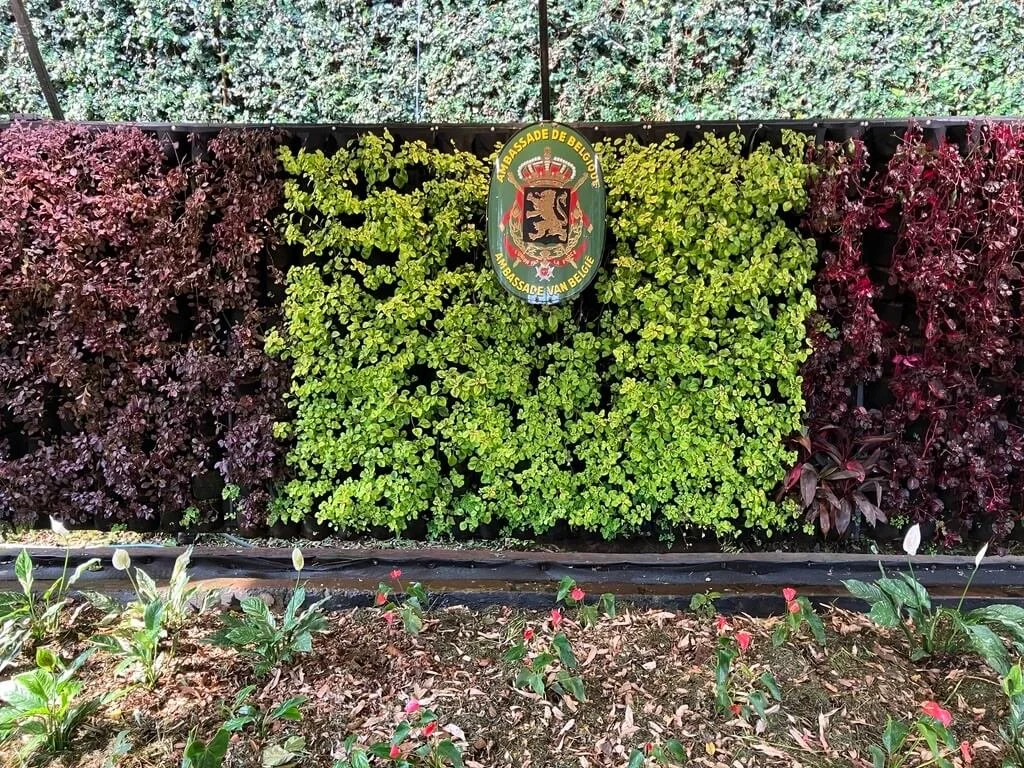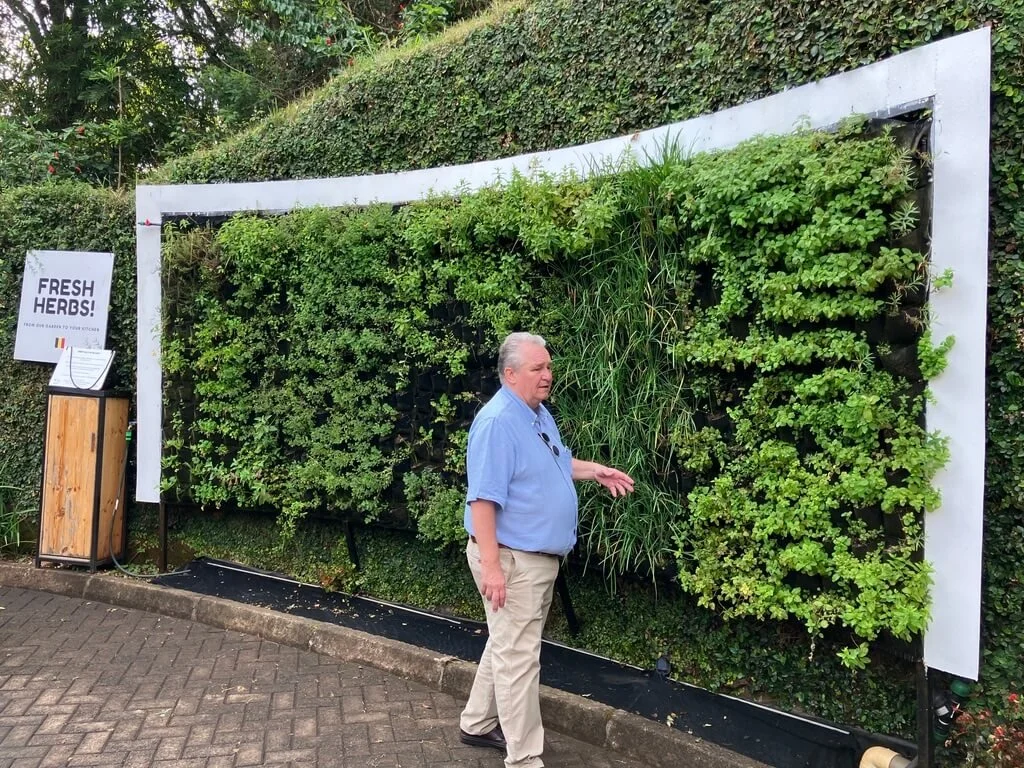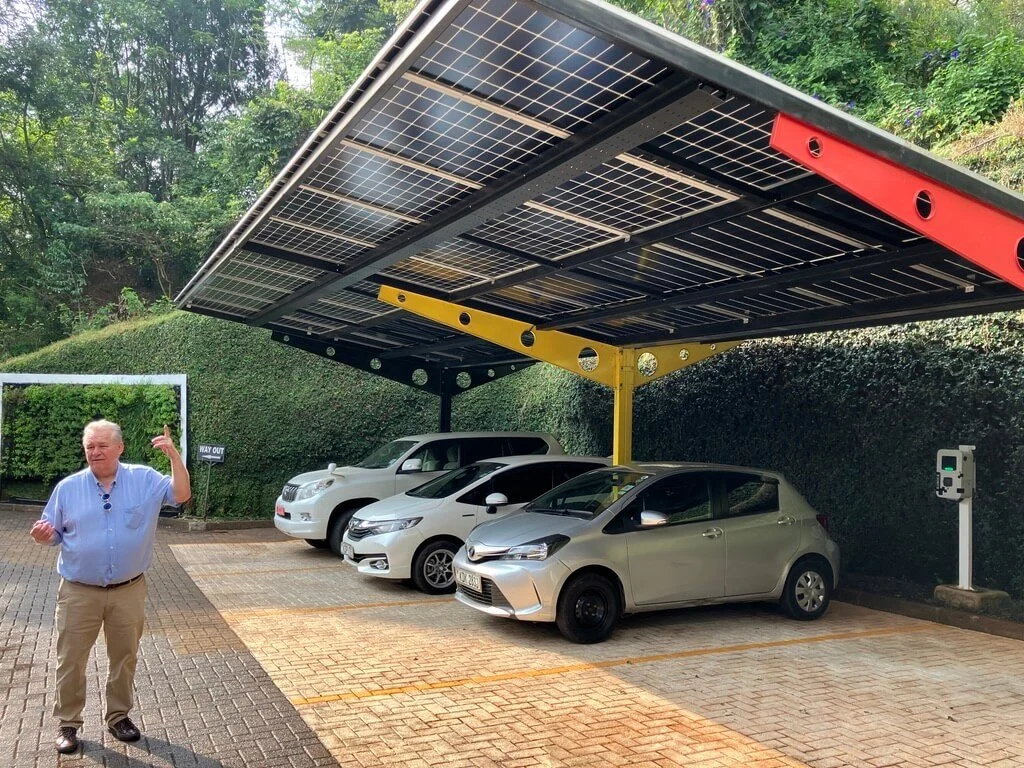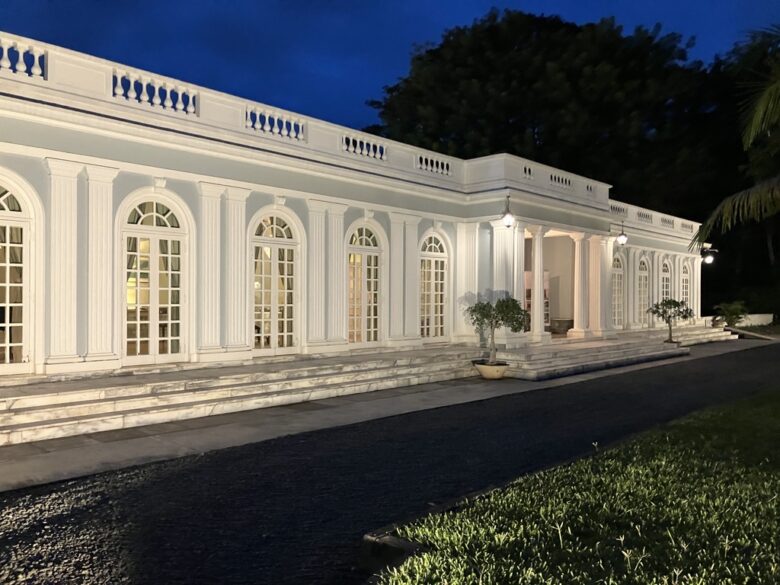On a brisk Kenyan evening, the Belgian Ambassador’s residence is awash in light, its doors open, lush gardens beckoning beyond a grand patio. Across expansive grounds which once boasted the largest collection of ferns in Africa is the embassy, a concrete mass of a building that could easily be mistaken for nearly any other embassy in most diplomatic capitals in the world. Unlike other embassies, however, the two-building five-acre compound has a design feature that makes it unique the world over – it was modeled after an eco-safari camp in the Kenyan bush.
When Pierre Pichot built his sprawling mansion in Nairobi in the 1950s, it was outdated before a single brick was ever laid. Aided by an inheritance from his former employer, Kenya’s largest coffee plantation owner with whom he “entertained a sentimental relationship”, the Frenchman modeled his elaborate home after the Grand Trianon in Versailles, complete with a Grand Bassin.
That the home was patterned after “perhaps the most refined architectural ensemble found on the royal estate of Versailles” made it a questionable choice in any era. However, had Pichot chosen instead the colonial architecture more popular at the time, it too, would be have been quickly passé as well. In 1950s Kenya, the Mau Mau rebellion was well underway, and by 1963, the country would be independent of its British colonizers.
Following the decline of coffee plantations in Kenya during the 1950s and 1960s, and allegations that he was misappropriating funds to support his lavish lifestyle, Pichot later faced financial ruin, and was forced to sell his grand estate. The subsequent owner, Malin Sorsbie, turned the elaborate property into a gallery that offered exhibitions, and art history classes to the locals. The gallery’s distance from town proved its undoing, however, and the Sorsbie Gallery was sold to the Belgian government in 1966 for 30,000 pounds sterling. Renovations were entrusted to a Belgian architect in the Louis XV style and for years, the grounds that hosted the embassy and the residence carried on as it always had, a throwback to a long-gone era.

When the current ambassador Peter Maddens assumed his post in 2021, he also found the home hopelessly out of date for entirely different reasons. Maddens, who had spent three years of his adolescence in the home during his father’s ambassadorship, was dismayed to discover some of the quirks he remembered about the home had remained unchanged, even decades later.
“I remember listening to the sound of the rain pouring off the roof and pounding on to the pavement below,” he told me. “My first night back in the house (as ambassador), I heard the same sound, and couldn’t believe in all the years in between, no one had ever done anything about it.”
It was on a staff excursion to participate in the Mara Mara marathon that an idea took hold.
Belgian compatriot Loic Amado and his partner Valery Super invited the delegation to stay at their safari camp Emboo, a carbon-neutral safari village. Maddens saw immediate parallels between the five-acre Belgian compound in Nairobi and the eco-camp.
“I could only think of one thing, which was I have the same infrastructure as Emboo does,” Maddens told me on one of the three occasions we spoke during my time in Nairobi to attend the TED Countdown summit. “They had 12 tents. I have two buildings. We have two cars. They had at the time, I think, three. They have 40 staff. I had 20 or 25 staff.”
“That’s the same infrastructure,” he recalls thinking. “I think I can do that with my embassy.”
It was a lofty goal. Years of deferred maintenance had left the property underperforming by every metric that matters to a 21st century property: energy efficacy, water use, resilience. Factor in the bureaucracy of government buildings, and the energy requirements of 24-hour security, and Maddens’ goal of transitioning the embassy and residence into a Net Zero property seemed as ambitious as a Frenchman who once wanted to bring a part of Versailles to Nairobi.

However, a year and a half after that visit to Emboo, Maddens and his team broke ground on new systems that copied Emboo’s model element for element. The embassy is now among the most ambitious green diplomatic buildings on the African continent—completely off-grid for electricity, dramatically more water-efficient, and producing much of its own food. It’s also the first Net Zero embassy in Nairobi, and Belgium’s first in the world. Even more remarkable, the transformation happened in only seven months and cost less than the price of many European urban apartments.
“We started construction in October of 2023 and flipped the switch on the electrical system and went off-grid in February of 2024,” Maddens told me at a dinner at the residence he and his wife hosted for a select group of TED Countdown attendees. “And we’ve been off-grid since then. It’ll make a big difference.”
The site integrates a comprehensive set of green-building features focused on energy efficiency, water conservation, and sustainable living. Vertical hydroponic gardens supply an abundance of fresh herbs and vegetables. Two biodigesters discreetly convert organic waste into biogas for cooking and heating. Solar panels and a bifacial solar carport now crown the rooftops, soaking up Nairobi’s ample sunshine.
“If there’s a problem with the batteries because we’ve had a party like this one and we run out by the next day, the two buildings are connected so that we go and check to see if the batteries down in the embassy have enough power to keep powering us up here or vice versa,” Maddens said. “If we’re still in trouble, we end up with the Kenyan National Grid, which isn’t a problem, because 95% of Kenya’s power is generated sustainably.”
Maddens is particularly pleased that the embassy now harvests every drop of rain that once gushed uselessly off the roof. Rainwater harvesting systems with 100,000 liters of storage coupled with a borehole as a main water source, are supplemented with city water when needed to meet all of the property’s needs. The property’s most elegant water feature doubles as a filtration lagoon, and a sequential batch reactor (SBR) treats all blackwater from sinks, showers, and toilets, resulting in a closed loop that operates without a sewer connection.
“It’s required a new way of thinking about everything,” Maddens said, “even down to the hand soap and laundry detergent we use. We’ve switched to all locally made, organic products.”
Before leaving his post, Maddens hopes to fully electrify the embassy’s vehicles, another nod to Emboo’s all-electric safari fleet.

As Diplomatica reported previously, it’s common for diplomatic properties to suffer a backlog of deferred maintenance, as more pressing matters of state occupy ambassadors’ time in office. But Maddens encourages his fellow members of the diplomatic corps to incorporate as many sustainability changes as they’re able, and encourage their successors to build upon their progress.
Need inspiration? Look to the Swiss Embassy’s urban oasis in the heart of Washington, or the House of Sweden’s LEED-certified building, or the ways in which several countries are incorporating beekeeping and pollinator gardens into their residences and embassies.
Want some guidance? Our Diplomatica team can offer complimentary referrals to sustainable builders and renovators; LEED guidance, or tips on native landscaping.
